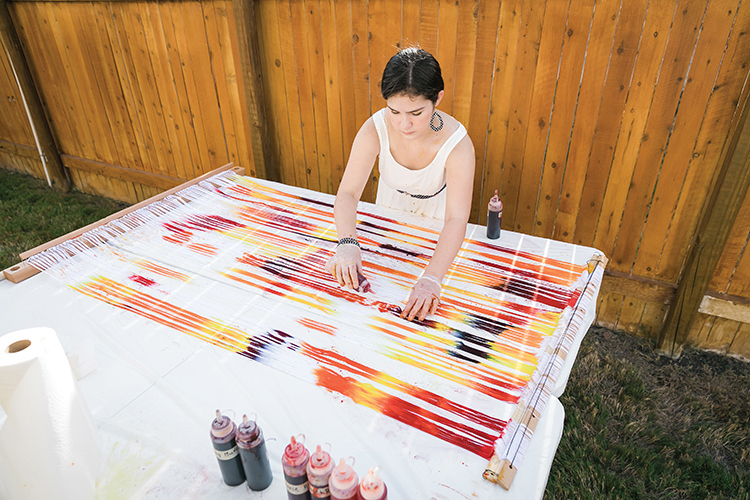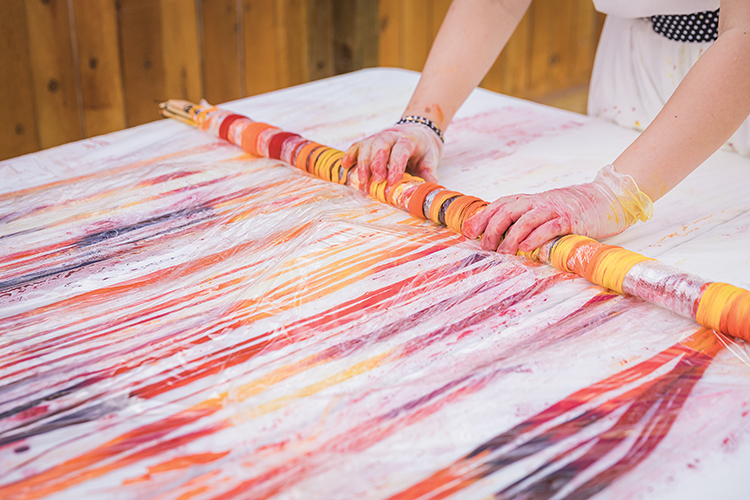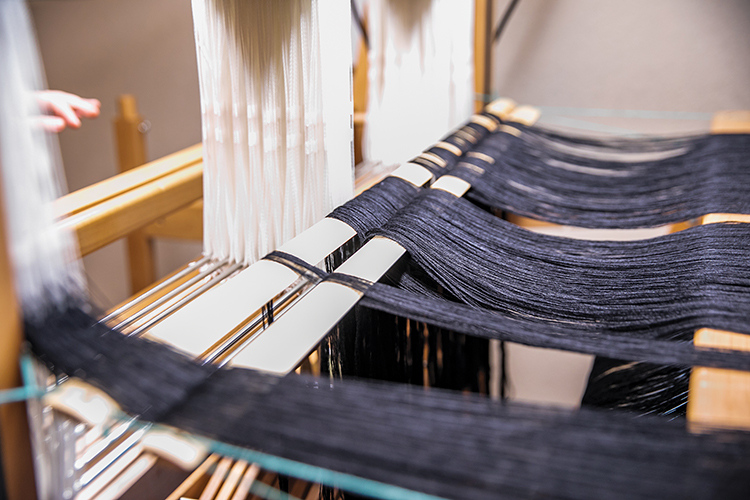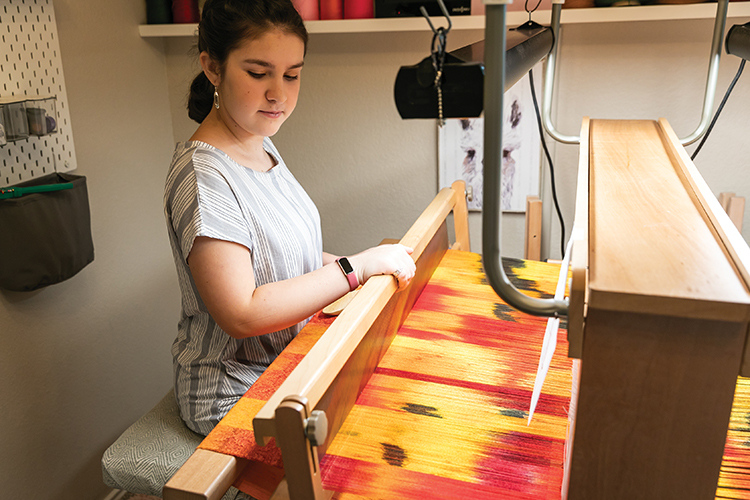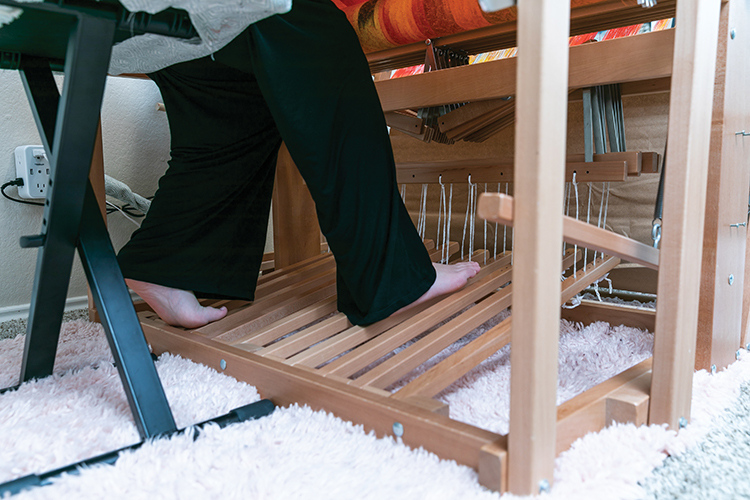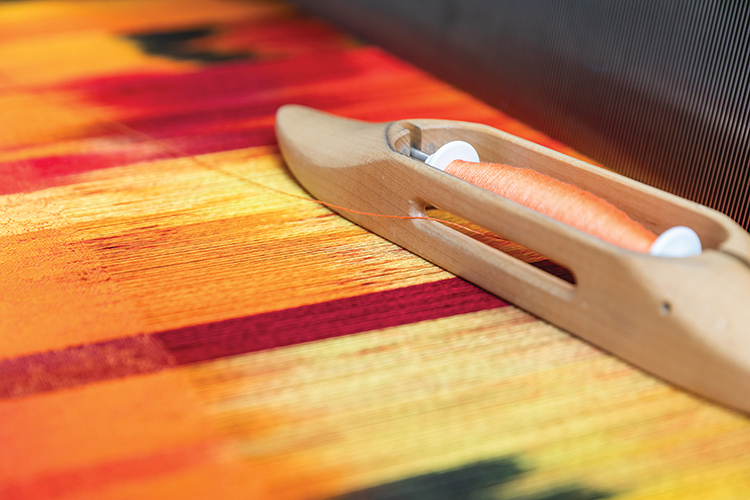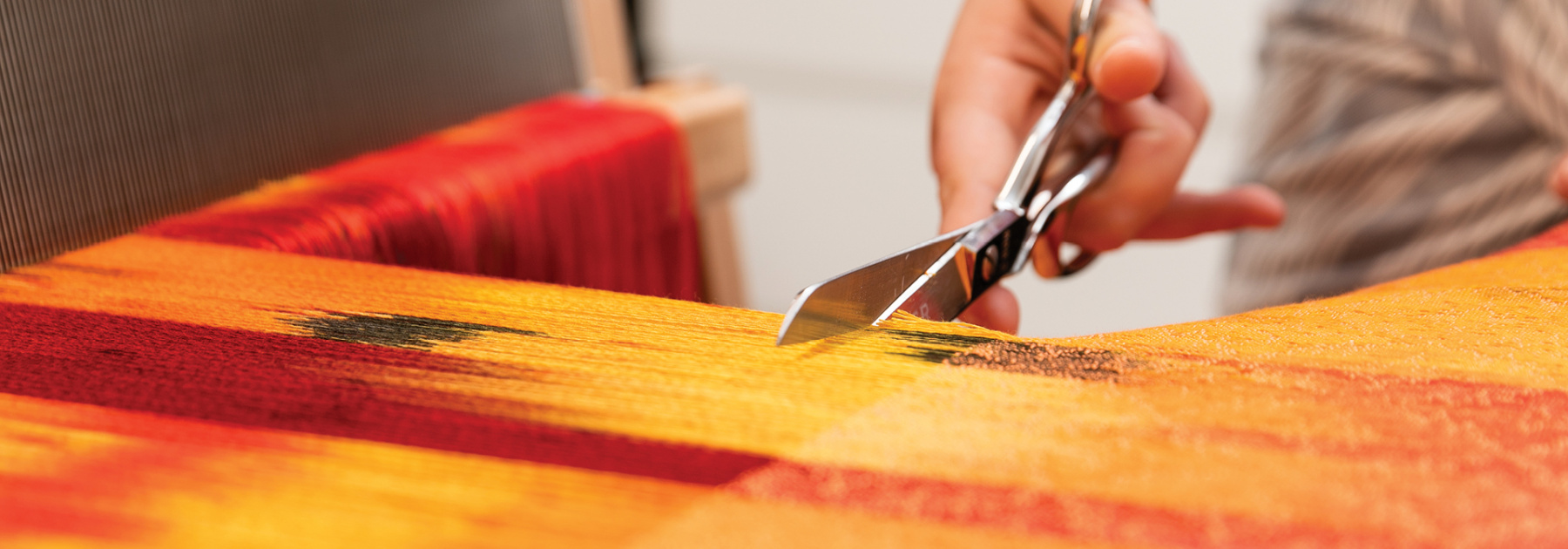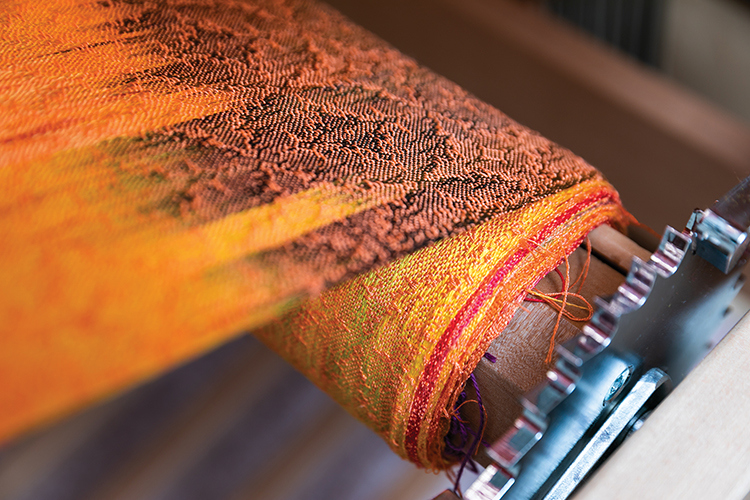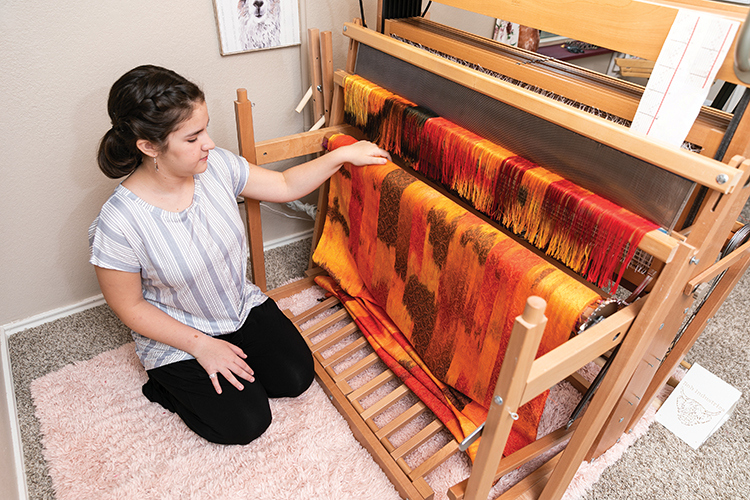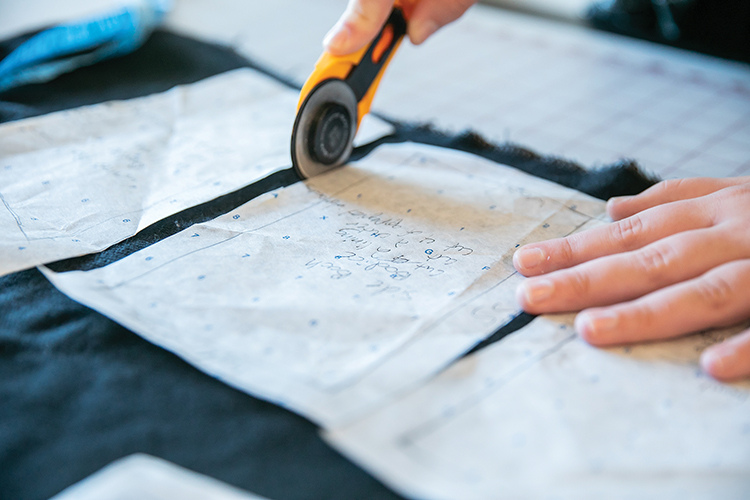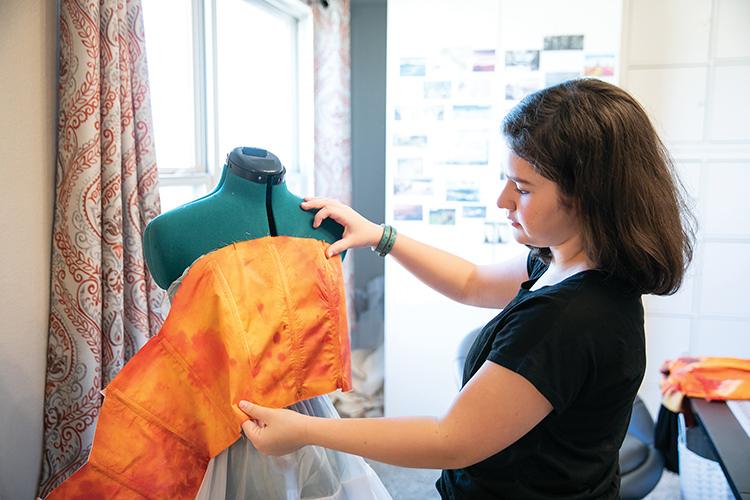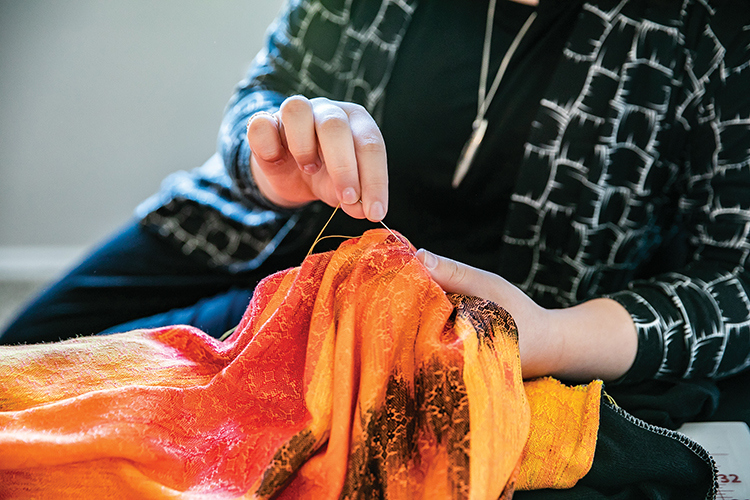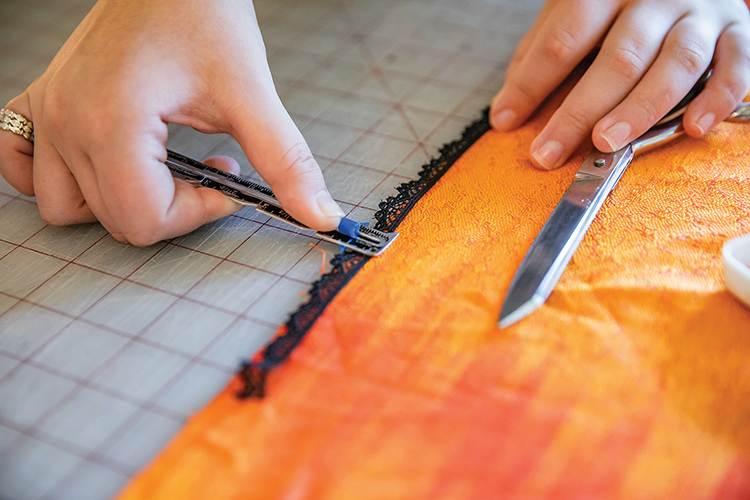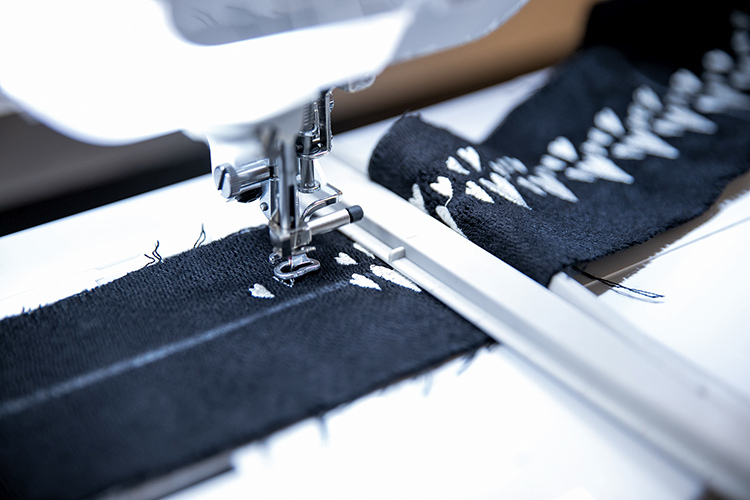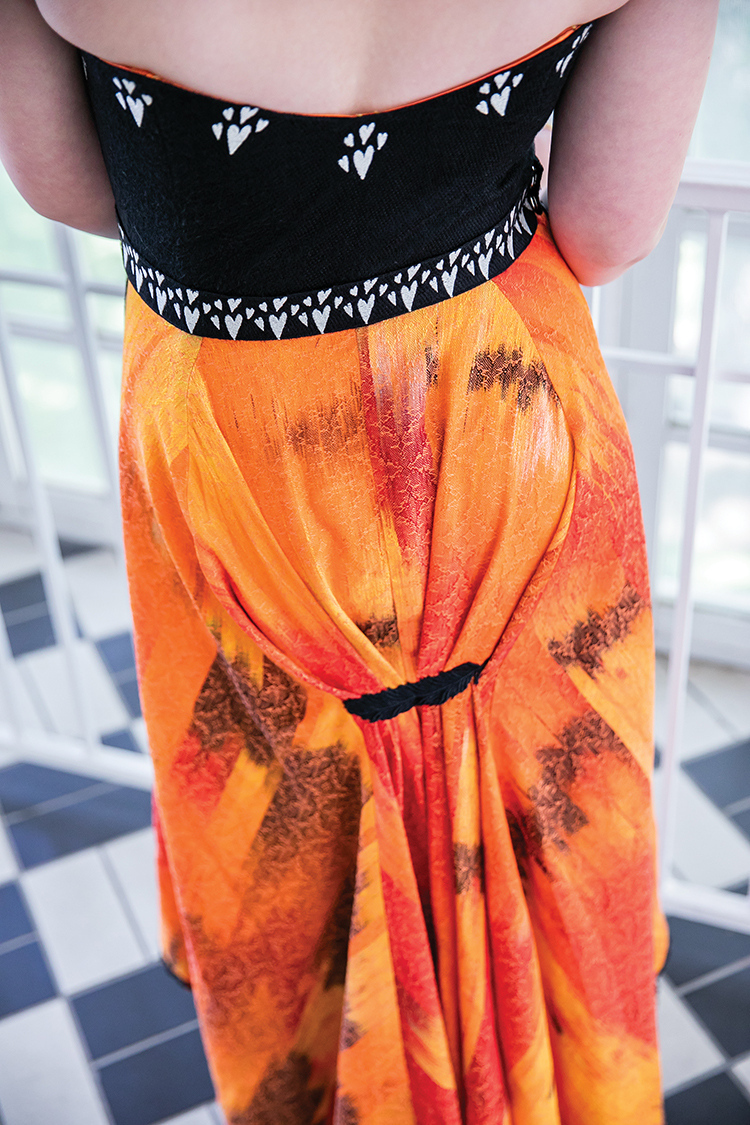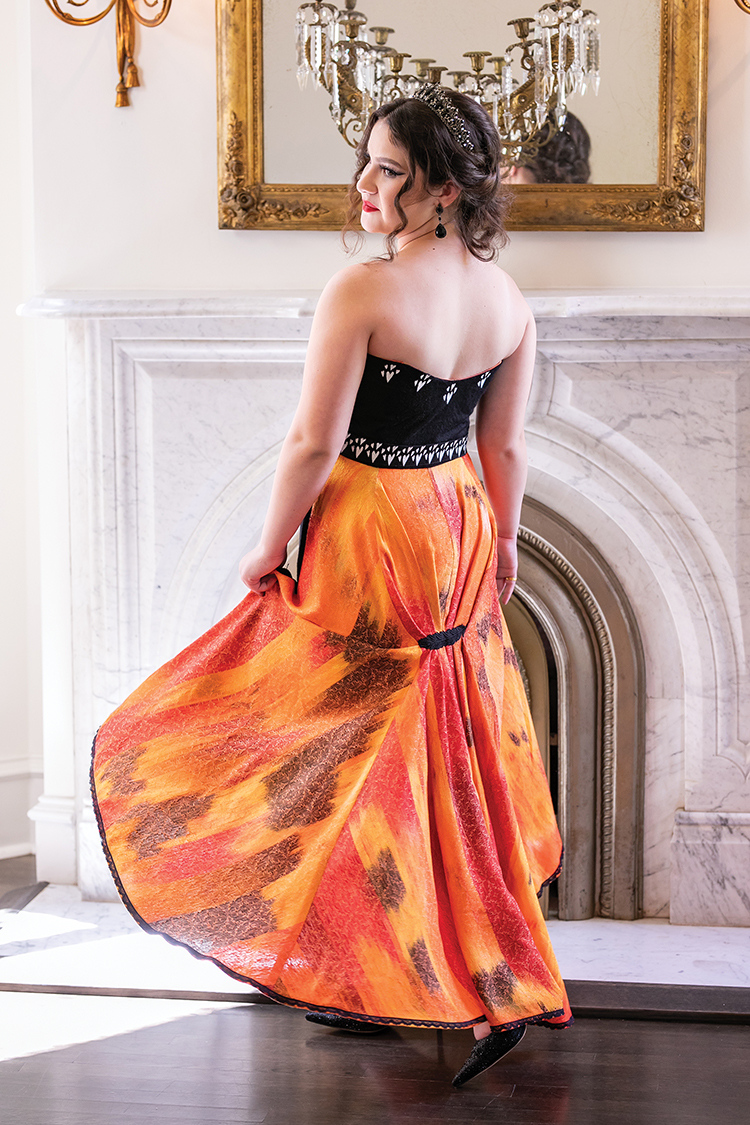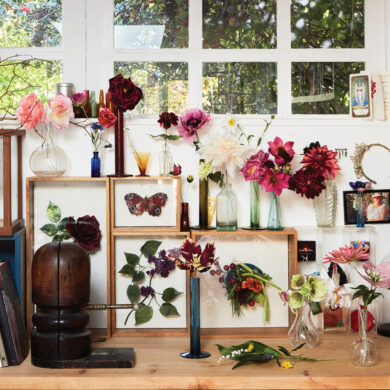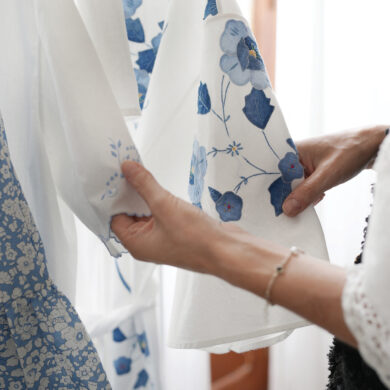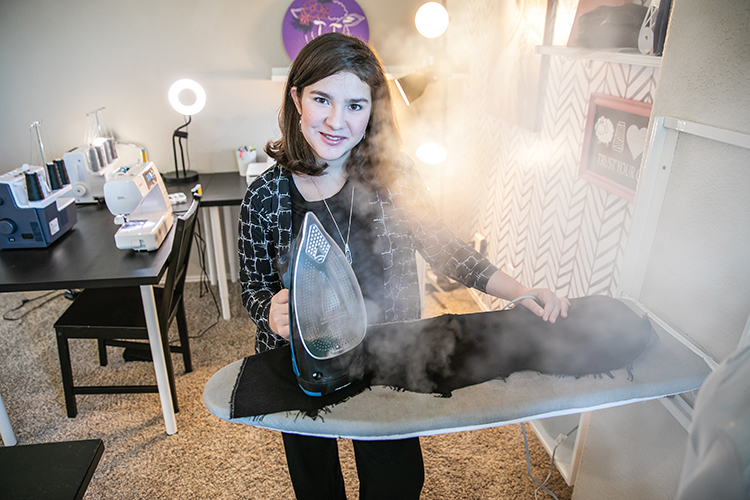
At the time of this publication, I will be celebrating my seven-year fiberversary. Half of my life has now been devoted to, obsessed with and focused on fiber arts. At the start of this journey, I certainly could not have predicted where I would be today. All I knew at the time was that I needed another ball of yarn. And then another and another. My mom signed me up for a summer series of classes at our local Joann store. Technically, I wasn’t even old enough to attend, but my brother was a year older — and where he goes, I go. We learned a number of skills in the weekly classes, but the one that stuck like glue was crocheting. Between what I learned in the class and what I discovered on YouTube, I was off and running.
I was working with yarn so often that it was probably only natural for curious wonderings about spinning my own yarn to creep into my mind. In a scenario that continues to play itself out regularly in my artistic life, I was too young for the spinning class I found. However, I am nothing if not persistent, so off I went! My spinning teacher, Julie Wilson, started off class by telling us, “Spinning changes lives,” and I had no idea in that moment just how true that statement was. Like most new spinners, I created plenty of chunky, uneven, often unusable handspun yarn — until one day, a switch went off, and I found my groove.
I fell in love with spinning the way I had with crochet, and I spent endless hours simultaneously practicing and enjoying this new discipline. It was great! Until … I found myself with a supply of handspun yarn that was growing by the day, and beyond staring at it lovingly, I had no idea what to do with it. Crochet didn’t seem like a great medium for it, and I am not a fan of knitting (sorry, knitters of the world).
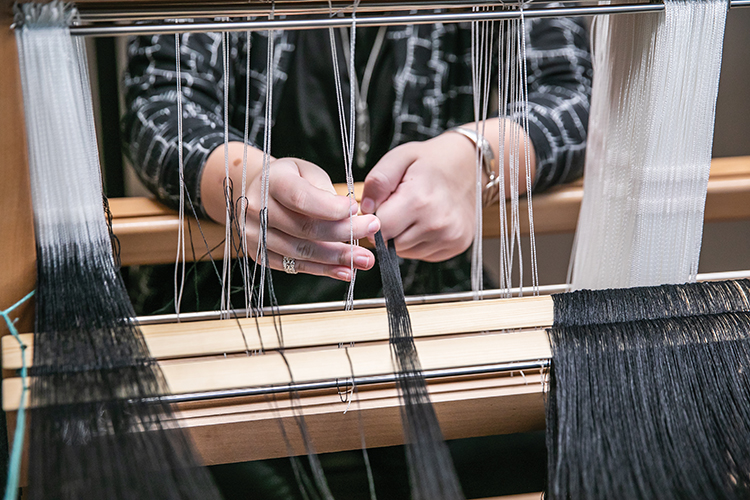
In another changing lives-type moment, I was introduced to weaving by a fellow fiber lover. I sat in the living room of Tina Coultas and wove a small peach bookmark on her rigid heddle loom. I had found the medium for my handspun yarn, and a whole new world opened up for me on that day. I bought a loom, then another, then another. Every purchase was to conjure more weaving width, more design capability, more bells and whistles and to allow me to follow my passion to the present day, where I create intricate and detailed garments using my very own handwoven fabric.
Renowned Italian fashion designer Roberto Cavalli is often associated with bold, exotic prints. He’s been quoted as saying, “Nature is my main source of inspiration — I will never stop taking hints from what I call ‘the greatest artist.’” I couldn’t agree more with his sentiment. As an artist, I find inspiration everywhere, but the colors, textures and intensity found in so many aspects of nature are irresistible.
Open my phone gallery and swipe to the side. You’ll find an endless folder of screenshots featuring exotic birds from all over the world. Pop into my Pinterest account and sneak a peek at my secret boards for beautiful sunsets and snowscape scenes. Glance at the vision board in my she-shed studio to learn about my latest obsession: bioluminescent jellyfish! The natural world has sparked so many ideas in my imagination that if a genie were ever to offer me three wishes, I’d ask for four times as many hours in every day so that I could more fully explore each one of them.
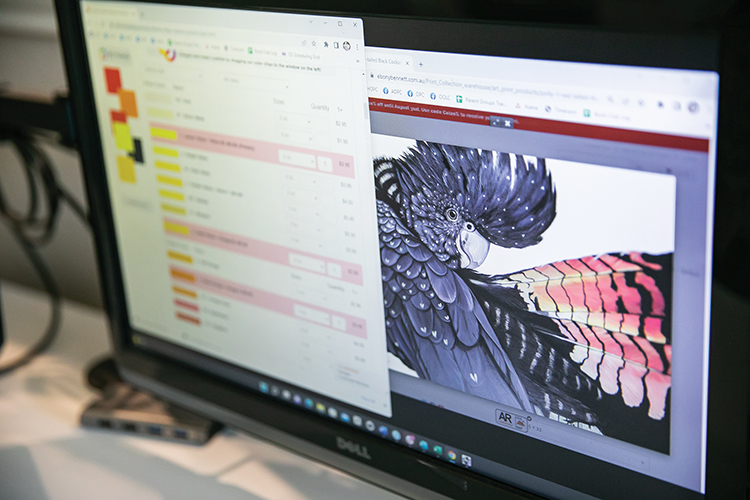
With all of the images I’ve squirreled away because they have lit up my creative spirit, the one I returned to again and again was a painting by an Australian artist named Ebony Bennett. She painted an image of a bird that was so vibrant and detailed, I wasn’t sure it existed in reality. A quick Google search confirmed that the Australian redtailed black cockatoo indeed exists, and it made her representation even more magical for me. I spent months and months brainstorming a way to recreate this majestic bird in an elegant garment, all the while using Ebony’s painting as my inspiration.
What struck me most about the cockatoo was the ombre-style tail coloring. In fact, it almost looks like two different birds combined into one being. The body is a deep black color, but then this tail feather plumage comes in and steals the show with a sea of fiery reds, bold oranges and sunny yellows. Delicate black horizontal lines add more dramatic effect on each striking feather. I knew it would be essential to bring the tail feathers to life in a bold way if I were going to do the cockatoo justice.
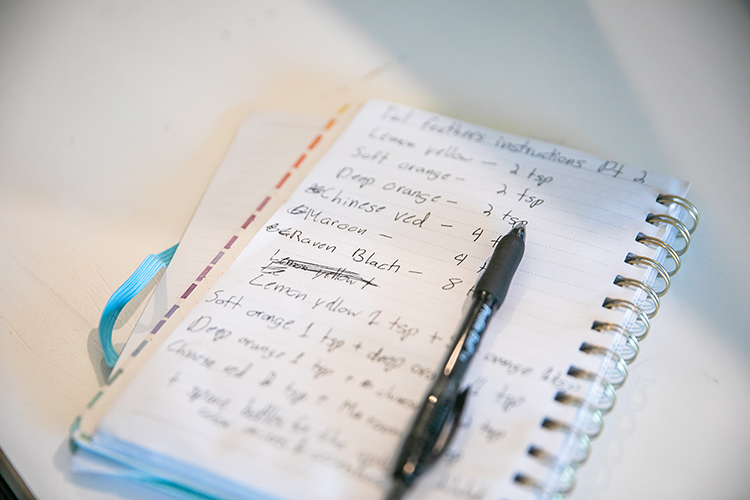
With that, the planning began! I often get asked about my favorite fibers, favorite part of the process, etc., and it can sometimes be difficult to choose a favorite. However, planning is at the top of my “favorites finalists.” The first aspect of the project that I focused on was fiber content. I work exclusively with natural fibers and wanted something soft and drapey for this dress. The shine of bamboo and silk made both contenders, but the price point of bamboo and the ability to purchase very large cones to create yardage made it the ultimate winner. From there, I determined thickness (hint: thinner is always better in my world!) and the structure of the fabric for a perfect blend of drape and stability.
To create the garment I envisioned, I would need two different handwoven fabrics — a solid black piece and a vibrant “tail feather” piece. Weaving is all about the interlacement of threads. The vertical component that is placed on the loom at the start of the project is called the warp. There are multiple ways to create a warp, but my preference is to use a warping mill. It organizes the threads and prepares for the transfer to the loom. The other component is the weft, the horizontal thread that interlaces through the warp to create the fabric yardage.
The next detail that consumed my thoughts for a few weeks was how to feature distinctive “tail feathers” on the finished dress. I looked at endless vintage dresses and patterns before finally sketching out my own design that had a pleated gathering at the back and phenomenal twirl factor. I determined the only way to do the cockatoo plumage justice was to paint it myself.
Using fine white bamboo yarn, I created the warps that would eventually become the vertical threads on the loom and in my handwoven fabric. Because bamboo is a plant fiber, I’d be using fiber-reactive dyes in conjunction with soda ash and urea to set the dye. I prepared a range of colors and began transforming the plain white yarn into bold feather-esque patterns. It all felt incomplete without the wavy black lines on the tail feathers like in Ebony’s painting. For perfect placement, I used a paintbrush to place each line precisely.
Once the tail feather warp was rinsed and dried, it was time to dress the loom and, finally, after countless hours of planning, see this fabric come to life. One of the most difficult aspects of this project was choosing the weaving draft that would create the pattern and texture of the fabric. It was one of those scenarios where you search for “the perfect thing,” and nothing quite holds up to that standard set in your imagination. The challenge of finding a design that would accentuate the warp colors without getting lost or distracting from the painted effect was a fine line to walk. After much deliberation, I chose a “snake skin” draft from an online source and couldn’t be happier with the choice. However, the treadling sequence on the loom pedals was very intricate and required an extreme level of focus with each throw of the shuttle containing my weft yarn.
The other difficult choice was deciding on a weft color for the tail feathers. I wanted to ensure the painted warp was highlighted in all the best ways, and in the end, I am so thrilled I wound a bunch of orange bobbins and never looked back.
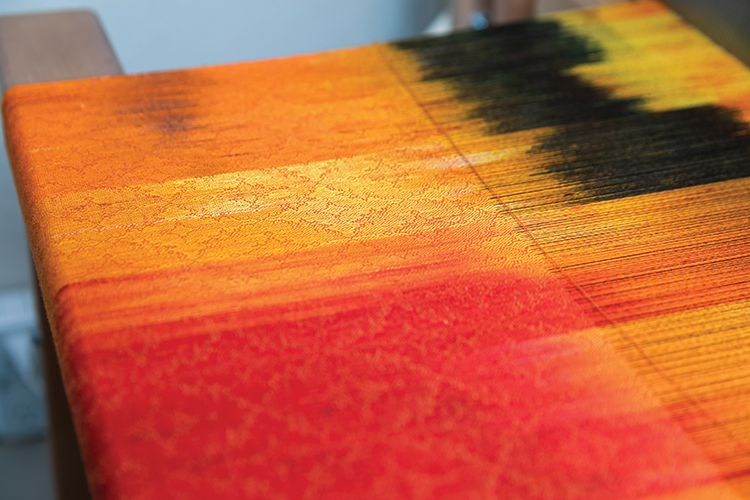
“Creative isn’t the way I think, it’s the way I like to live.”
— PAUL SANDIP
By the time both pieces of fabric were woven, I had easily spent 100-plus hours on this project. And I think that very fact is why people who follow my projects on social media cringe when I lay out the fabric, reach for a rotary cutter and start cutting out my pattern pieces. I am often asked if it upsets me to cut into my handwoven fabric, and it genuinely does not. When I sit down to create, I have the final vision in my head, and cutting into the fabric is part of the journey to achieve my goal.
While cutting into the fabric doesn’t faze me, I was embarking on a few “first-time” skills that consumed quite a bit of mental energy to plan and execute. This was my first time building the internal structure of a corset and drafting my own sewing pattern from scratch. I leaned on advice from mentors and tips collected from fellow sewists over the years … and a lot of muslin iterations to get it just right!
“Keep your mind on the great and splendid things you would like to do, and then, as the days go gliding away, you will find yourself unconsciously seizing upon the opportunities that are required for the fulfillment of your desire …”
— DALE CARNEGIE
As I brought the final garment together, I revisited the masterful painting by Ebony Bennett and incorporated a few small touches to pay homage to her portrait of this beautiful cockatoo. Using my embroidery machine, I created a freestanding lace feather to adorn the back of the skirt and added small hearts on the solid black fabric inspired by some of the accent strokes within her piece.
When the time came to slip the final piece on, it was truly a magical feeling. What began as a screenshot of a painting of a bird had become a wearable representation of nature’s elegance, boldness and beauty. The realization that strands of yarn, barely thicker than sewing thread, can be transformed in this way will likely be a source of fascination to me for the rest of my life.
Oh yes — and remember that obsession with bioluminescent jellyfish I mentioned earlier? Just wait until you see what I create to bring that
to life! Stay tuned. I am just getting started!
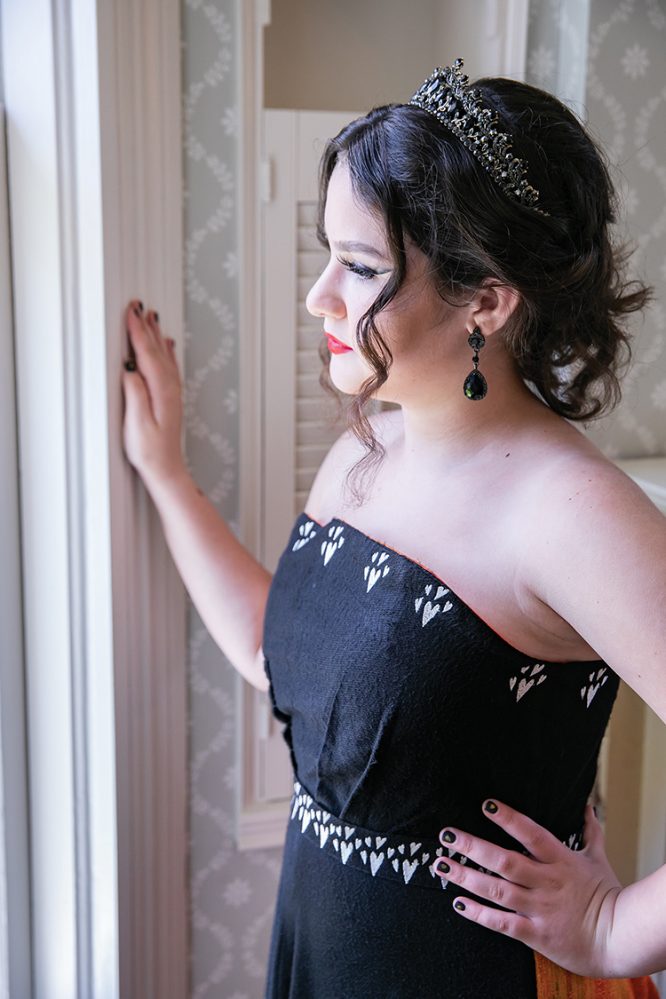
“Individuality will always be one of the conditions of real elegance.”
— CHRISTIAN DIOR

